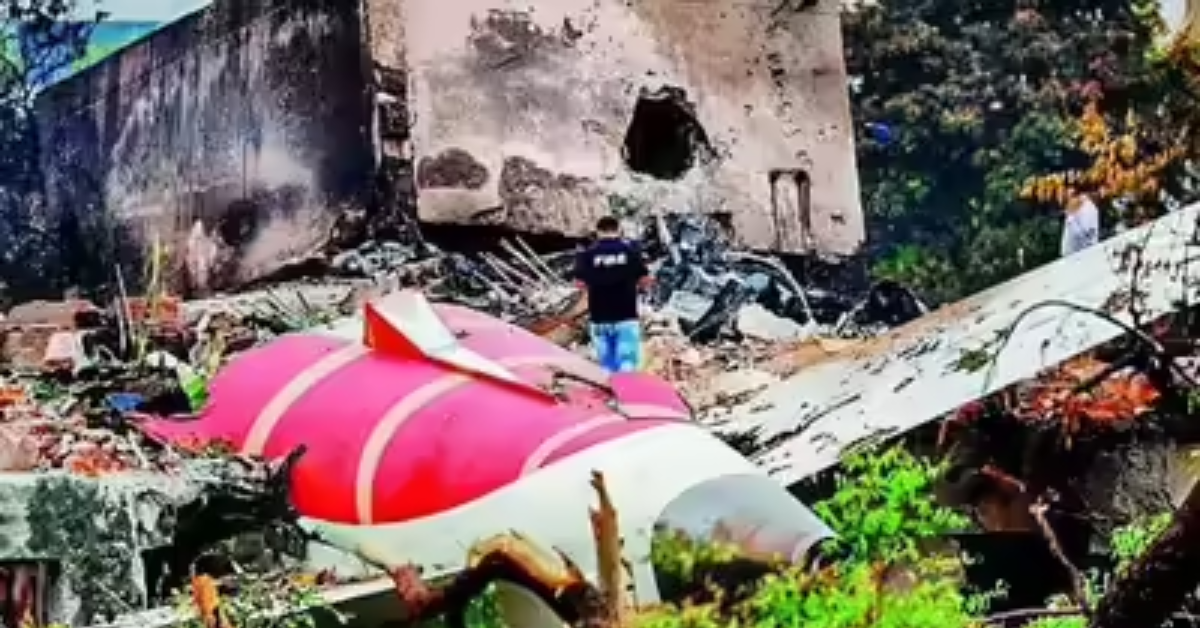A tragic Air India plane crash has once again brought aviation safety into the spotlight. As investigators race to uncover the truth behind the incident, officials have confirmed that the black box—a critical data recorder from the aircraft—has been successfully recovered and downloaded. The initial analysis is expected to be completed within the next 10 days, which could finally provide answers to what went wrong.
This blog explores the current status of the investigation, the role of the black box, and what passengers, families, and aviation authorities can expect in the coming days.
🔹 Overview of the Incident
The Air India aircraft in question reportedly suffered a serious mechanical or navigational issue shortly before or during landing. The crash resulted in the loss of several lives and raised concerns about possible lapses in equipment, maintenance, or communication.
As per standard aviation protocol, a full investigation was immediately launched by India’s Directorate General of Civil Aviation (DGCA) and other concerned aviation bodies. One of the most critical components in such an inquiry is the aircraft’s Flight Data Recorder (FDR) and Cockpit Voice Recorder (CVR)—commonly referred to as the black box.
🔹 What Is a Black Box and Why Is It So Important?
Despite the name, the black box is actually bright orange for visibility in wreckage. It comprises two separate devices:
- Flight Data Recorder (FDR): Records various parameters such as altitude, airspeed, heading, and engine performance.
- Cockpit Voice Recorder (CVR): Captures audio from the cockpit, including pilot conversations, alarms, and communication with air traffic control.
Together, these devices offer a minute-by-minute log of the aircraft’s journey, especially the crucial last moments before a crash. This information helps investigators determine:
- Whether the issue was mechanical, human, or environmental.
- If proper procedures were followed.
- Whether emergency protocols were activated in time.
🔹 Current Status: Data Downloaded, Analysis Underway
According to official sources close to the investigation, both the CVR and FDR have been recovered in readable condition—a vital breakthrough, as sometimes crash damage renders the black box unusable.
The data has already been successfully downloaded, and a team of aviation experts is now analyzing it. Authorities expect preliminary conclusions to be drawn in about 10 days. These findings could play a crucial role in determining:
- The chain of events leading to the crash.
- Any anomalies in communication or aircraft behavior.
- Potential accountability or operational flaws.
🔹 Key Questions Investigators Are Trying to Answer
While the black box is under review, investigators are seeking answers to a range of critical questions:
- Was there any mechanical failure?
Did the engines, navigation systems, or hydraulics malfunction? - Did the pilots follow standard operating procedures?
Were there any missed checklists or incorrect decisions? - What was the communication with ATC (Air Traffic Control)?
Were any distress signals, warnings, or deviations from flight paths noted? - Was weather a contributing factor?
Could strong winds, low visibility, or turbulence have worsened the situation? - How did the crew respond?
Did they try to divert or issue an emergency landing call?
The answers to these questions will guide not only accountability but also future policy and safety measures.
🔹 Public and Political Pressure for Transparency
In the wake of the tragedy, there has been growing pressure on Air India and the DGCA to conduct a transparent and timely investigation. Families of the victims are demanding clear answers, while aviation analysts are calling for the results to be made public.
The incident has also led to questions in Parliament, where opposition parties have sought a detailed report on:
- Aircraft maintenance records.
- Pilot training logs.
- The age and condition of the aircraft involved.
- Emergency preparedness of the airline.
🔹 What Happens After the Initial 10 Days?
Once the initial black box data is analyzed, the following steps are likely:
- Preliminary Report Released:
This includes early insights but may withhold conclusions pending full investigation. - Full Technical Evaluation:
Aviation and aircraft manufacturers may collaborate to run simulations. - Recommendations and Action Plan:
If systemic issues are found (e.g., outdated training, mechanical lapses), authorities may mandate immediate corrective actions. - Final Report:
Typically released within 3–6 months, depending on complexity, this report will offer a detailed explanation of the crash and suggest measures to prevent recurrence.
🔹 How This Affects Aviation in India
Each air crash, though rare, reshapes aviation protocols and public trust. The Air India crash may lead to:
- Stricter inspections on older aircraft.
- Enhanced pilot simulation training.
- Updated emergency response protocols at airports.
- Review of aircraft procurement and servicing practices.
This is also a moment of reckoning for Air India, which has recently undergone ownership changes and is working to rebuild its brand under the Tata Group.
🔹 The Human Cost: Families Await Closure
While aviation experts focus on data and safety, the real impact lies with the families of the deceased and injured. For them, the black box isn’t just a device—it’s a potential key to understanding why their loved ones didn’t make it home.
Counseling, financial aid, and constant communication will be critical in the coming weeks, not only for healing but for restoring trust in India’s aviation infrastructure.
🔚 Final Thoughts: The Road to Answers
The successful retrieval and download of black box data marks a significant milestone in the Air India crash investigation. While it may take 10 days for initial findings, the road to truth, accountability, and better aviation safety is now clearly underway.
As India mourns the lives lost, the focus must remain on conducting a thorough, transparent, and unbiased probe that ensures such a tragedy does not repeat.
Until then, the black box will continue to speak — not with sound, but with truth embedded in data, waiting to be heard.



